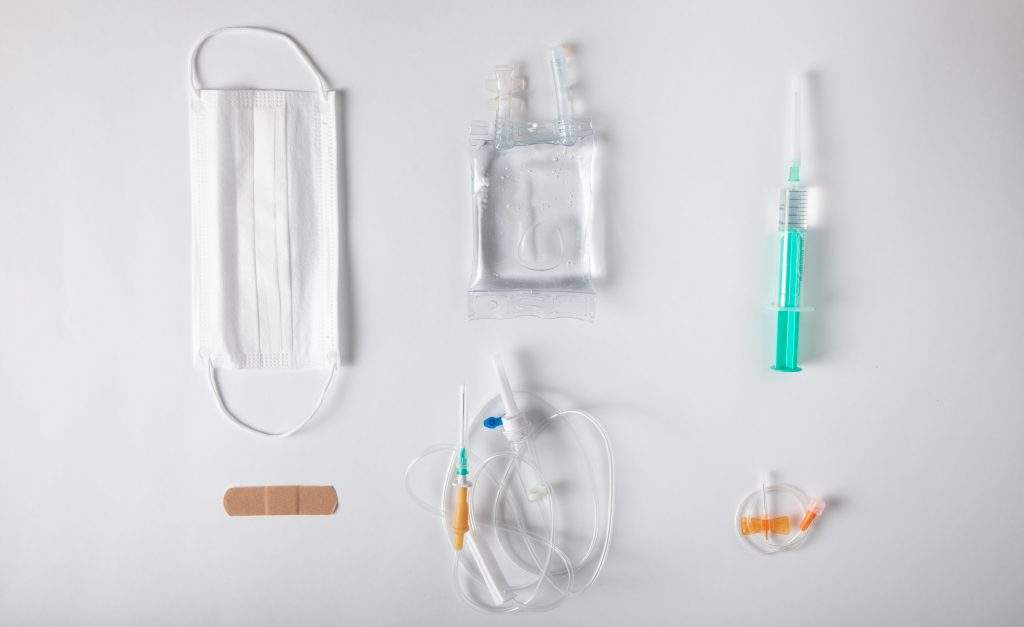
Infusion Therapy and When is it Needed?

There are numerous circumstances when medicines are needed to enter the system in ways other than orally. Whenever patients get severely unwell with a complicated condition, they may be unable to eat, chew, or swallow, let alone administer medicines orally.
Furthermore, you should not administer certain drugs orally since certain acidic digestive juices would damage them, rendering them ineffective in treating the condition. The best possible method of treatment in such conditions is Infusion Therapy.
Therefore in this post, we’ll learn about infusion therapy, its working mechanism, and which illnesses it may cure.
What Precisely Is Infusion Treatment?
Infusion treatment is the administration of medicines or liquids via a syringe or a catheter channel. It is the administration of medications when a drug or medicine has to be supplied at an even regulated rate.
Infusion treatment is infusing medicine by a syringe or catheter pump device, generally intravenously (IV). Infusion treatment also comes in the form of:
- Epidural
- Subcutaneous
- Intramuscular
If you have previously been to a nursing home or hospital, you’ve most likely received or seen an Intravenous drip. It is to keep your body hydrated or ensure that additional drugs get administered swiftly if necessary. An intravenous drip is an example of infusion treatment. An insulin transmitter that delivers insulin directly beneath the dermal tissue is also a similar treatment.
Nutrients and a variety of medicines get administered through Infusion therapy, such as:
- Antibiotics
- Biologics
- Chemotherapy
- Antivirals
- Inotropic heart medicines
- Blood elements
- Antifungals
- Hormones of growth
- Replacement of immunoglobulins
- Corticosteroids
- Antiemetics
- Immunotherapy
Infusion medication treatment is often effective since it enables precise dosage. However, certain kinds of chemo treatment, for instance, must be gently delivered into the circulation.
Several medicines, in life-or-death situations, must be administered into the bloodstream swiftly, such like:
- Heart attack or cardiac arrest
- In case of poisoning
- Embolism
- Severe Allergic reaction
What Conditions Are Treated With Infusion Therapy?
Chemotherapy drugs are a popular treatment for most cancer patients. Although certain chemotherapeutic drugs may be taken normally through the mouth, others should be delivered through the veins (intravenously). Chemo medicines are delivered straight into the circulation via infusion treatment. It also allows patients to get other drugs again without having to employ additional incisions.
However, infusion treatment is not limited to cancer patients. It is commonly employed to cure perhaps the following conditions:
- Autoimmune conditions
- Heart collapse or arrhythmia due to edema
- Severe dehydration
- Immune system deficits
- Severe infections that do not respond to oral medications
- Soreness or pain
It is capable of delivering potent medicines for diseases such as:
- Ulcerative colitis or Crohn’s disease
- Systemic lupus erythematosus
- Psoriasis or psoriatic arthritis
- Rheumatoid arthritis, a kind of arthritis that affects the joints
IV treatments can also be used to administer medicines for a diverse range of diseases. Following are only a few examples:
- Hemophilia
- Replacement immunoglobulin treatment
- Migraine “cocktail” medicine
- Sclerosis drugs
- Plasma treatment for osteoarthritis
- Osteoporosis treatment with bisphosphonates
and many more…
What Should You Expect While Going Through Infusion Therapy?
IV infusion treatment is most commonly conducted in a medical environment, including a hospital emergency room, doctor’s clinic, an outpatient unit, or at a station particularly dedicated to infusion therapy. In addition, certain forms of infusion treatment can sometimes be administered at a patient’s residence by healthcare practitioners.
Every IV therapy cycle necessitates a separate needle insertion. If you need numerous IV treatment cycles, your physician might suggest alternating to a normal IV line or Intravenous catheter.
Another such option is to get a conduit surgically placed beneath the epidermis.
IV treatment is delivered by clinicians or equivalent qualified medical personnel in any location.
The technique necessitates constant supervision; therefore, a control device is generally connected to the catheter or line to assure appropriate dosing.
Risks of Infusion Therapy
The placement of an IV line is usually painless, although it might occasionally get difficult, particularly when patients have tiny veins.
If patients require frequent infusions, scarred tissue could easily become an issue, causing harm to the veins. The following are some of the potential risks of Infusion therapy:
- Emphysema of the lungs
- Infectious disease
- Phlebitis
- Collapsed veins
An IV channel may get loosened occasionally, exposing medicine to enter adjacent tissues. As a result, it could prove dangerous with certain medicines.
Other hazards are dependent on the drugs you are taking. For example, each additional drug might produce a significant reaction in the system. If a patient is liable to react, it is more likely to occur during the very first session of receiving a certain therapy.
Your therapist, physician, or primary care practitioner will go through the potential consequences of infusion therapy as well as warning flags.
Briefly to conclude
Infusion drug treatment is employed to administer a broad range of therapies for a variety of illnesses.
You can administer chemotherapeutic medicine and similar medications that must reach the bloodstream slowly.
If you ever have a life-threatening crisis or accident, Infusion treatment is the most preferred way to give medicines into the veins. Infusion therapy is now often delivered directly into the system to deal with any prevalent deficiency.
Discuss the prospective advantages and dangers of intravenous infusion treatment with your primary care doctor or healthcare practitioner. They can assist and make sure that you are well informed and prepared for the procedure if/when needed.